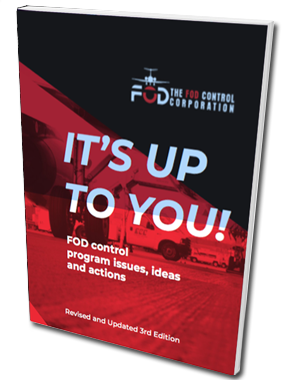Introduction
A tow behind sweeper can be a vital piece of equipment for keeping large outdoor areas clean and safe. Whether you are using it to remove debris from fields, clean roadways, or operate as an airport FOD sweeper to protect aircraft from foreign object damage, proper maintenance is critical to ensure consistent performance from your tow-behind sweeper. Preventive maintenance extends the life of your runway sweeper and provides the opportunity to avoid expensive repairs and downtime.
1. Clean After Every Use
Two major factors to tow behind sweeper maintenance are frequent cleanings and inspecting the sweeper, especially the brushes. After each use, be sure to remove any lingering material such as leaves, gravel, or debris from the brushes, hopper, and wheels. Operating in a heavy-use area such as an airport can result in the accumulation of small metal pieces and stones quickly, which reduces the tow-behind sweepers’ sweeping capabilities. Often, a quick rinse or thorough brushing will prevent clogs and help prevent a loss of function.
2. Inspect Brushes Regularly
The brushes are the most important piece of equipment associated with your sweeper. Worn brushes allow for less effective sweeping and place more effort on the equipment than necessary. Be sure to check the brushes weekly for even wear and thinning bristles, and adjust/replace them on time. For runway sweepers, it is especially important to keep the brushes in excellent condition, as even the smallest pieces of debris can cause major issues.
3. Check Tires and Wheels
As tow behind sweepers are continuously pulled across uneven surfaces, the tires and wheels are subjected to heavy wear and tear. Check for cracks, air pressure, and general alignment. A tire out of alignment not only prematurely wears the tire but also can render the sweeper less effective. Particularly on large airport properties, a tire that is not properly functional can result in uneven sweeping action and debris being missed, which could result in a substantial safety hazard for departing and arriving aircraft utilizing the runway.
4. Lubricate Moving Parts
Your tow behind sweeper has multiple moving parts, such as wheel bearings and chain drives. Over time, friction can wear down these parts, which can result in squeaking, resistance, or outright failure. Always lubricate all designated joints and bearings per the user manual. Frequent greasing will allow your sweeper to operate smoothly and reduce strain on the towing vehicle.
5. Empty and Inspect the Hopper
The hopper is where the debris will accumulate. The operator should periodically empty the contents of the hopper so the sweeper does not operate under unnecessary weight. The debris in the loaded hopper can also unnecessarily strain the tow vehicle. Consider emptying the hopper between uses. Each time the hopper is emptied, the operator should inspect for dents, cracks, or other signs of rust.
6. Monitor and Tighten Bolts and Connections
Over time, the vibration from continual use while towing can loosen nuts, bolts, and fasteners. Schedule this to be checked each week or so. An individual loose connection can directly cause misalignment and force something else to become misaligned. For a runway sweeper, this is even more important, as high-speed towing will require more stability.
7. Store Properly
When not in operation, it is essential to keep your tow behind sweeper in a dry and protected area. Exposure to rain or direct sunlight may hasten the process of rusting, cause parts to fade, and compromise the integrity of rubber components. Proper storage practices will help maintain your machine in optimal condition for extended durations.
Suggested Resources
Check out our articles on Why Summer is Peak FOD Season or Training Airport Ground Crews to Combat FOD for more great ideas.
Final Thoughts
Caring for your tow-behind sweeper is straightforward, yet it necessitates regularity. Whether utilized as a versatile cleaning device or specifically as an airport FOD sweeper and runway sweeper, consistent inspections and prompt maintenance ensure safety, efficiency, and durability. By adopting the appropriate maintenance practices recommended by The FOD Control Corporation, your sweeper will provide dependable service for many years ahead.

